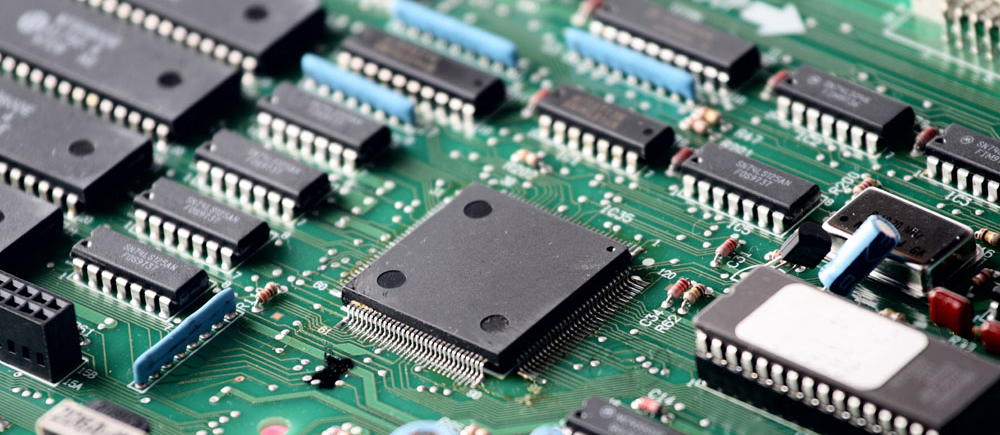LED display driver products mainly include row scan driver chips and column driver chips, and their application fields are mainly outdoor advertising LED screens, indoor LED displays and bus stop LED displays. From the perspective of display type, it covers monochrome LED display, dual color LED display and full color LED display.
In the work of the LED full color display, the function of the driver IC is to receive the display data (from the receiving card or video processor and other information sources) that conform to the protocol, internally produce PWM and current time changes, and refresh the output and brightness grayscale. and other related PWM currents to light up the LEDs. The peripheral IC composed of driver IC, logic IC and MOS switch acts together on the display function of the led display and determines the display effect it presents.
LED driver chips can be divided into general-purpose chips and special-purpose chips.
A general-purpose chip, the chip itself is not specially designed for LEDs, but some logic chips (such as serial 2-parallel shift registers) with some logic functions of led display.
The special chip refers to the driver chip specially designed for the LED display according to the luminous characteristics of the LED. LED is a current characteristic device, that is, under the premise of saturation conduction, its brightness changes with the change of current, rather than by adjusting the voltage across it. Therefore, one of the biggest features of the dedicated chip is to provide a constant current source. The constant current source can ensure the stable driving of the LED and eliminate the flickering of the LED, which is the prerequisite for the LED display to display high-quality images. Some special-purpose chips also add some special functions for the requirements of different industries, such as LED error detection, current gain control and current correction.
Evolution of driver ICs
In the 1990s, LED display applications were dominated by single and dual colors, and constant voltage driver ICs were used. In 1997, my country appeared the first dedicated drive control chip 9701 for LED display, which spanned from 16-level grayscale to 8192-level grayscale, realizing WYSIWYG for video. Subsequently, in view of LED light-emitting characteristics, constant current driver has become the first choice for full-color LED display driver, and 16-channel driver with higher integration has replaced 8-channel driver. In the late 1990s, companies such as Toshiba in Japan, Allegro and Ti in the United States successively launched 16-channel LED constant current driver chips. Nowadays, in order to solve the PCB wiring problem of small pitch LED displays, some driver IC manufacturers have introduced highly integrated 48-channel LED constant current driver chips.
Performance indicators of the driver IC
Among the performance indicators of LED display, refresh rate, gray level and image expressiveness are one of the most important indicators. This requires high consistency of current between LED display driver IC channels, high-speed communication interface rate and constant current response speed. In the past, the refresh rate, gray scale and utilization ratio were a trade-off relationship. To ensure that one or two of the indicators can be better, it is necessary to appropriately sacrifice the remaining two indicators. For this reason, it is difficult for many LED displays to have the best of both worlds in practical applications. Either the refresh rate is not enough, and black lines are prone to appear under high-speed camera equipment, or the grayscale is not enough, and the color and brightness are inconsistent. With the advancement of technology of driver IC manufacturers, there have been breakthroughs in the three high problems, and these problems have been solved. At present, most of SRYLED LED displays have high refresh rate with 3840Hz, and no black lines will appear when photograph with camera equipment.
Trends in driver ICs
1. Energy saving. Energy saving is the eternal pursuit of LED display, and it is also an important criterion for considering the performance of driver IC. The energy saving of the driver IC mainly includes two aspects. One is to effectively reduce the constant current inflection point voltage, thereby reducing the traditional 5V power supply to operate below 3.8V; the other is to reduce the operating voltage and operating current of the driver IC by optimizing the IC algorithm and design. At present, some manufacturers have launched a constant current driver IC with a low turning voltage of 0.2V, which improves the LED utilization rate by more than 15%. The power supply voltage is 16% lower than that of conventional products to reduce heat generation, so that the energy efficiency of LED displays is greatly improved.
2. Integration. With the rapid decline of the pixel pitch of the LED display, the packaged devices to be mounted on a unit area increase by geometric multiples, which greatly increases the component density of the driving surface of the module. Taking P1.9 small pitch LED Screen as an example, a 15-scan 160*90 module requires 180 constant current driver ICs, 45 line tubes, and 2 138s. With so many devices, the available wiring space on the PCB becomes extremely crowded, increasing the difficulty of circuit design. At the same time, such a crowded arrangement of components can easily cause problems such as poor soldering, and also reduce the reliability of the module. Fewer driver ICs are used, and the PCB has a larger wiring area. The demand from the application side forces the driver IC to embark on a highly integrated technical route.
At present, mainstream driver IC suppliers in the industry have successively launched highly integrated 48-channel LED constant current driver ICs, which integrate large-scale peripheral circuits into the driver IC wafer, which can reduce the complexity of application-side PCB circuit board design. It also avoids the problems caused by the design capabilities or design differences of engineers from various manufacturers.
Post time: Mar-03-2022








